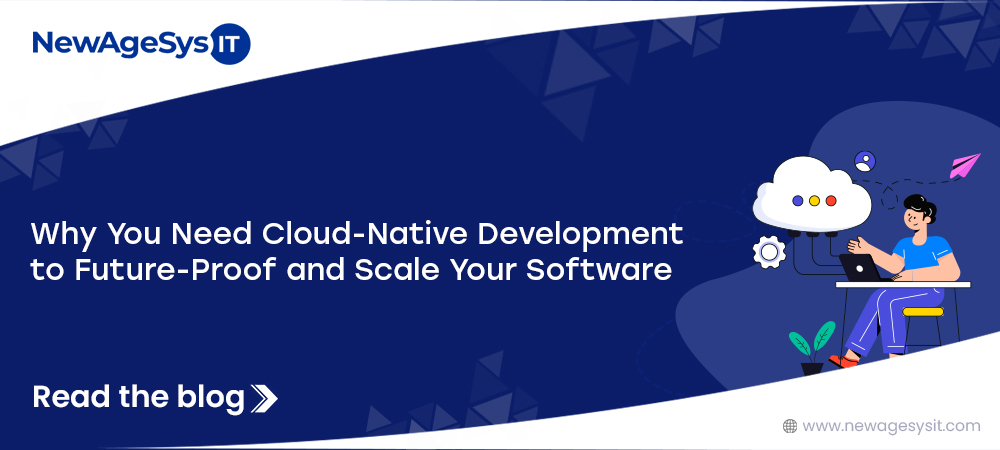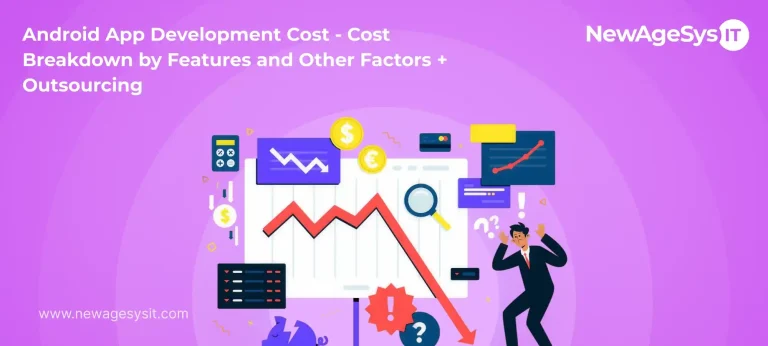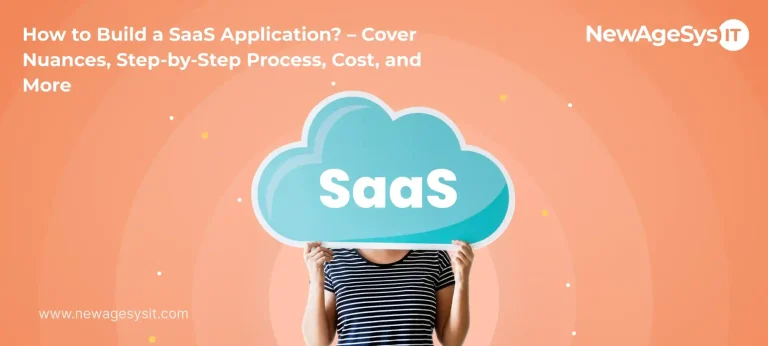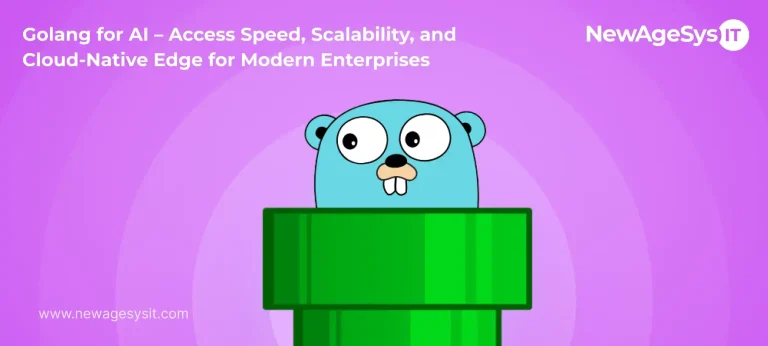With the digital landscape changing at a pace never seen before, influenced by AI and advanced automation capabilities, your business needs its software to be highly scalable and future-ready. As traditional software architecture struggles to grow with your company, implementing a cloud-native development approach enables you to overcome the age-old challenges and grow your business.
This article discusses everything you need about cloud-native development and how it helps scale and future-proof your business software.
What is Cloud-Native Development?
Cloud-native development involves building and deploying apps/software that fully take advantage of cloud computing platforms. In other words, it is a software architecture approach that inherently leverages cloud computing’s scalability, flexibility, and agility.
It is critical to understand that cloud-native is less about where an application resides (in the cloud) and more about how it is built and deployed. Typically, cloud-native apps consist of several small and reusable components called microservices.
Cloud-native development enables you to use these components freely and integrate microservices into any cloud environment. What does that mean for your business? Microservices allow applications to scale efficiently and be updated independently. As a result, cloud-native development offers a resilient and adaptable approach to software development.
Understanding Key Concepts in Cloud-Native Development
In order to fully understand cloud-native development and all it offers, you need to know the following concepts.
Microservices: Small, independent, and loosely coupled services with their own databases and technology stack that are the building blocks of cloud-native development. Depending on the architecture, they typically communicate using REST APIs, event-driven messaging, or message brokers like Kafka.
Containerization: In cloud-native development, microservices are typically packaged within containers, including all dependencies like code and libraries. While all microservices may not require containers, containers are the preferred way to package and deploy microservices because of the consistency they offer across cloud environments. Furthermore, they are lighter and more portable than virtual machines (VMs).
Orchestration: As you start to use hundreds or thousands of containers, it becomes challenging to manage them. In such cases, you would need an orchestration tool such as Kubernetes. They allow you to automate the software’s deployment, scaling, and management.
Continuous Integration & Continuous Delivery (CI/CD): CI/CD pipelines enable you to automate code testing, integration, and deployment in cloud-native development. In Continuous Integration (CI), developers frequently merge code changes into a shared repository, whereas with CD, your updates are always ready for deployment.
DevOps: It combines development (Dev) and IT operations (Ops) to improve collaboration and automate workflows. In other words, DevOps aligns developers and IT operations teams through automation, continuous monitoring, and infrastructure as code (IaC). As a result, you can ensure fast and reliable cloud-native software delivery.
As you can see, cloud-native development is much more than using cloud computing platforms. Hence, you need a software development company like NewAgeSysIT to build a cloud-native app optimized for scalability and ready for the future.
Why do Businesses Need Cloud-Native Development for Scaling and Future-Proofing Their Software?
Companies today depend on scalable and future-ready software to serve their customers and ensure seamless operations. From dealing with sudden traffic spikes to gearing up for global expansions, cloud-native development solves all your scalability concerns and future-proofs your business. Here is how cloud-native development can help companies scale applications dynamically without downtime or excessive costs.
How Cloud-Native Development Solves Scalability Challenges for Businesses
One of the most significant advantages of the cloud-native development approach is its ability to scale up your software. Here is how cloud-native helps you solve your business’s scalability challenges.
Microservices Enable On-Demand Scaling
Scaling monolithic applications may require you to duplicate entire systems, which can be expensive and inefficient. You might have to update the system if just one component fails or needs scaling. However, using a cloud-native development approach, you can scale up services independently via microservices. As a result, it reduces your costs while also improving agility.
Containers and Kubernetes for Elastic Scalability
You are likely familiar with the challenges of predicting traffic spikes in advance. It can often lead to overpaying for infrastructure or suffering outages due to under-provisioning. Containerization in cloud-native development helps you to overcome this challenge as they package the microservices, including all dependencies. Combining this with Kubernetes enables real-time scaling of your software to prevent over and under-provisioning.
CI/CD and DevOps for Faster Deployments Without Disruptions
Slow software updates can often be a roadblock for your business and prevent you from adapting to user demands time-efficiently. Traditional software updates can take weeks or even months to develop and deploy. In cloud-native development, we use CI/CD pipelines to enable continuous updates with minimal downtime.
At NewAgeSysIT, we offer specialized Software Testing Services and cloud-native development to help you reduce release cycles from months to hours.
Future-Proofing Software with Cloud-Native Development
While legacy apps tend to lock your business into outdated technologies, cloud-native development allows your software to evolve. At NewAgeSysIT, we often help companies future-proof their software using our expertise in AI and ML development services and cloud-native development.
As a result, the experts at NewAgeSysIT help you integrate emerging tech into your software. The following are some proven ways to future-proof your software with cloud-native development.
Cloud-Native Architecture is Built for Innovation
Businesses still using traditional software often struggle to integrate new and advanced tech, ultimately slowing down their innovation. With a cloud-native development approach, you can use microservices and APIs to better adopt new technologies without overhauling the entire system.
Multi-Cloud & Hybrid Cloud Flexibility Prevents Vendor Lock-In
Relying on a single cloud provider can be risky because of various factors, including cost fluctuations, services, outages, and limited flexibility. As you know, apps built using cloud-native development can work across multiple cloud platforms. As a result, it gives you freedom and reliability. Multi-cloud and hybrid cloud strategies ensure you can switch providers or distribute workloads as needed.
Built-In Security and Resilience
Cyber threats evolve daily, and cloud-native development can help you future-proof your software for these threats. While traditional security models depend on perimeter defenses, IT Security and Cybersecurity experts like NewAgeSysIT build cloud-native apps with advanced security. Our apps benefit from automatic security patches, encryption, and distributed architectures to minimize risks to your business.
How to Implement Cloud-Native Development for Your Business?
A reliable development partner like NewAgeSysIT, with proven expertise in Cloud Managed Services, is typically your best choice for cloud-native development. Companies like NewAgeSysIT use a proven approach for efficient cloud-native development that involves the following steps:
Step 1: Assess Your Existing Infrastructure & Readiness
Step 2: Break Down Your Application Using Microservices
Step 3: Use Containers to Package Microservices
Step 4: Automate Deployment with CI/CD Pipelines
Step 5: Implement DevOps for Seamless Collaboration
Step 6: Secure Your Cloud-Native Applications (Zero-Trust Security)
Step 7: Choose the Right Cloud Strategy (Public, Private, or Hybrid)
Step 8: Monitor, Optimize, and Continuously Improve
Final Thoughts
The cloud-native development approach offers several benefits to businesses, including scalability and future-proofing. Furthermore, it uses CI/CD and DevOps, making it faster and more efficient while minimizing infrastructure expenses. However, you need an expert like NewAgeSysIT specializing in cloud and future tech to make this a reality.
While companies sticking to traditional software models continue to risk higher costs and slower innovation, cloud-native development overcomes these challenges. As experts in cloud tech, AI, and advanced automation, we can help you build truly scalable and future-ready software for your business.
Use a cloud-native development approach to build scalable and future-ready software with the expert team from NewAgeSysIT.



















